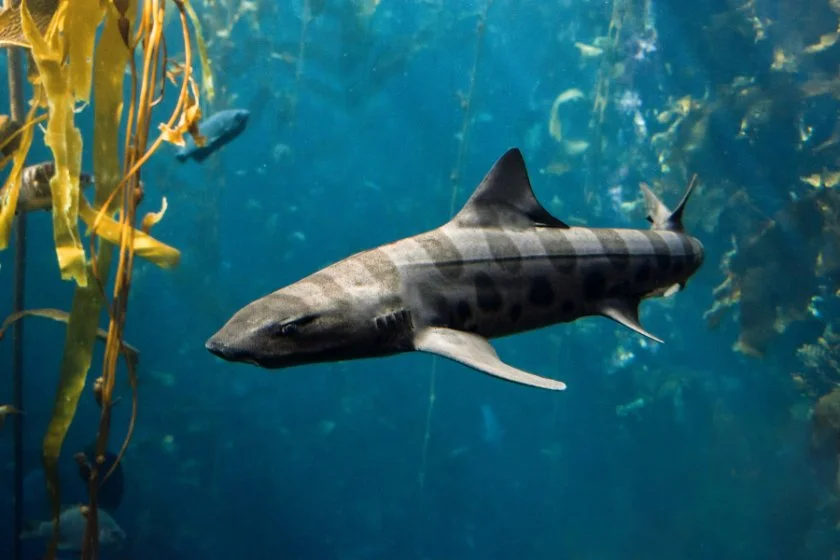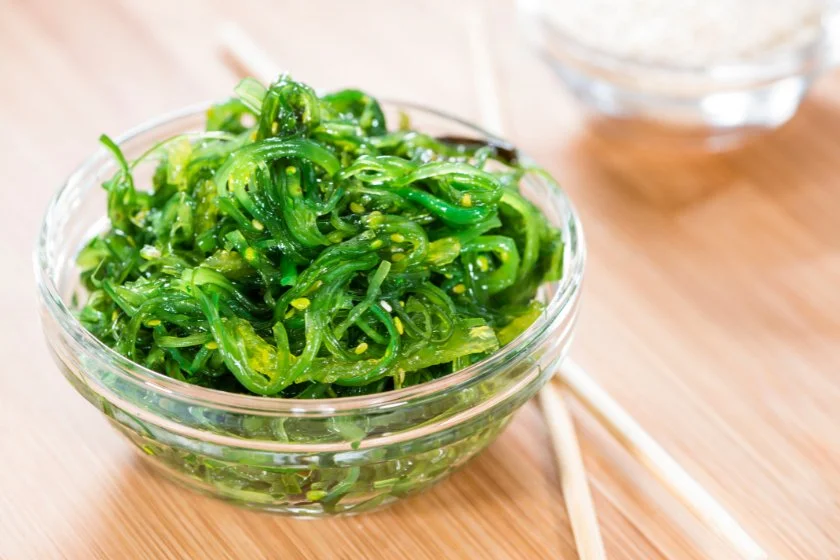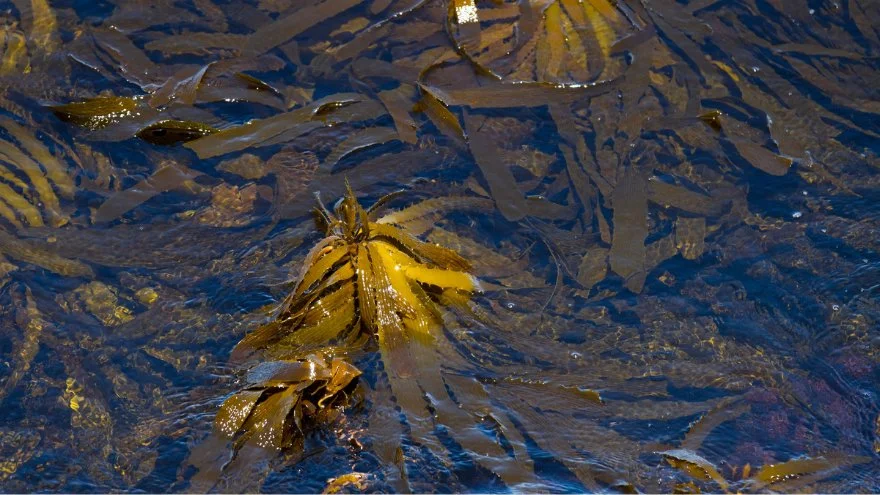Kelp is a type of seaweed that grows underwater in every ocean. It is quite tall and can grow to about 200 feet during its lifetime.
There are about 30 species of kelp in the oceans, and the most popular among them is the bull kelp.
Kelp is beneficial to humans because of how rich it is. It contains many materials like calcium, folate, magnesium, and vitamins A, B1, B2, C, D, and E, as well as other minerals like zinc, iodine, iron, potassium, and copper.
It reduces inflammation in the brain and helps to boost overall brain productivity.
This food also advances immunity as it strengthens against diseases. It stimulates weight gain among livestock and aids in digestion too. But what eats kelp?
Besides humans, there are some animals that eat kelp and benefit immensely from them. They include sea urchins, kelp crabs, abalones, bristle worms, and prawns.
What Animals Depend On Kelp Forests?

Many animals rely on kelp forests to find food and hunt for prey. Hence, the kelp forest is home to many species. It attracts predators such as sharks, whales, and even sea otters.
These animals rely on kelp forests because they can find any amount of prey at once.
Kelp forests house many invertebrates and fishes which work together to keep the ecosystem balanced.
Here, several animals feed on themselves. This feeding pattern helps ensure the kelp forests do not turn into barren wastelands.
Animals that get the best out of kelp forests are marine birds like crows, herons, and gulls.
They feed on fishes and other invertebrates that live in kelp forests as top predators and cannot be preyed on in return.
What Eats Kelp: Animals That Eat Kelp
The list of animals that eat kelp underwater is endless. Some are vertebrates and invertebrates, while most are omnivores.
Sea Urchin (Echinoidea)
Sea urchins are the biggest threat to kelps. These animals live underwater in rocky areas and get most of their food from kelp forests.
However, they get preyed on by humans and other animals such as fish.
Sea urchins feed off kelp forests in excess, so scientists are currently grooming sunflower sea stars, a popular sea urchin predator.
If this works, the number of sea urchins in the ocean will give the kelps space to grow and expand.
Sea urchins eat with their five-part jaw by scraping algae off rocks and rock crevices. They achieve this feeding technique by using a structure called the Aristotle lantern.
The Aristotle lantern has five teeth arranged in a circle and is located at the underparts of the body, while the anus is atop the body.
The sea urchins eat other things apart from kelp and algae. They can eat periwinkles, plankton, and even mussels.
Abalone (Haliotis)
Abalones are molluscs and excessively feed on algae. it’s no wonder they are common predators of kelps. Like sea urchins, they serve the purpose of controlling the algae population in marine habitats.
Abalones are also prey to many other animals, with humans at the top of that list.
They easily fall prey to humans because of their shells and meat, which are highly nutritious. For this reason, white and black abalones are currently endangered.
Abalones only feed on algae. While they’re young, they feed on plankton, but as they grow older, abalones focus on feeding on the different algae they can find in the oceans.
Abalones feed with a structure called the radula. The radula is a set of teeth in their mouth that they use to scrape off algae from rocks while they eat.
Kelp Crabs (Pugettia productia)
Kelp crabs can be great consumers of kelps and other algae. They live in kelp forests and feed on other animals and plants asides from kelp.
For this reason, kelp crabs do not threaten the kelp forests; they feed on other things besides kelp.
Generally, they have a very wide menu and often switch from eating plants to eating animals during winter and when the plants die off.
Kelp crabs are not the same as other crabs. There are over 4,000 species of crabs in the world, and this is one of them.
The kelp crab, however, stands out because of its long legs and small body. It also has a dark brown color similar to that of kelp.
Bristle Worms (Polychaeta)
Bristle worms live in oceans and reefs. They get their name from the nature of their bodies. Their skin comprises tiny hairlike strands that can poke a person when touched.
However, these hairs keep them safe from predators and can wreak havoc when they enter a human’s body.
Bristle worms are major predators of kelps. They help to reduce the overpopulation of algae in the water but sometimes take it to the extreme.
They feed on kelps without mercy, not minding that the forest can get barren. However, their predators, snails, shrimps, and crabs, help to create a balance in the ecosystem, preventing the kelp from being eaten away completely by these predators.
Halfmoon Fish (Medialuna californiensis)
The Half-moon fish is an interesting animal that gets its name from its tail which is shaped like a half-moon.
Like some other animals on this list, the Halfmoon fish is important to the ecosystem because it prevents the algae in the ocean from running into an overgrowth.
It feeds mostly on kelp, algae, and other animals in the ocean, such as molluscs and crustaceans.
The Halfmoon fish lives in rocky reefs, kelp forests, and oil rigs. It’s especially common in California, among other places worldwide.
Despite being kelp predators, these animals are also prey to sea lions, seals, birds, other bigger fishes, and marine birds. The Halfmoon fish thrives in a social environment, so they’re mostly part of schools.
Pacific Blue Tang (Parachanturus hepatus)
The pacific blue tang is a brightly coloured fish that lives in the Pacific and Indian oceans. It always appears harmless because of its demeanour but is very dangerous.
The blue tang’s flesh is highly dangerous to human beings and can cause poisoning if consumed by them. As for animals, this fish is not dangerous, but it packs a good punch when defending itself against predators.
This fish mostly feeds on kelp while eating other kinds of seafood, including plankton, algae, and seaweed which it consumes primarily.
But when they move away from their natural habitat, they develop a wider appetite and begin to eat bloodworms and shrimps in aquariums.
Prawns (Dendrobranchiata)
Prawns are crustaceans, a type of shellfish living in marine environments. They look like shrimps and are constantly mistaken for them.
The difference between both lies in their anatomy. Prawns have a brain, but it isn’t that big. They are rich in vitamins and minerals and can be a healthy choice if you want to go into dieting.
Their major predators include humans and other fishes in their habitat. Prawns feed on kelp by breaking off pieces of it with their claws and consuming them.
However, they do not excessively feed on kelps, so they’re not considered a threat to them. This animal lives in kelp forests and also finds most of its other prey there.
Starfish (Asteroidea)
Starfishes are beautiful and complex animals. There are over 2000 species of starfishes in the world, and all of them possess neither blood nor brains.
People believe starfishes are dangerous because of the tiny spikes on their skins, but this isn’t entirely true. Some starfishes are poisonous, and some are not. It depends on the species you come in contact with.
Starfishes feed on kelp and other underwater plants. However, if they cannot find living plants to feed on, they would settle for decomposed plants on the seabeds.
A certain type of starfish, known as the sunflower starfish, is the top predator of the sea urchin, which helps to strike a balance in the ecosystem.
Sea Snails (Liparis montagui)
Sea snails might not appear to be dangerous, but they are. They are poisonous, even to touch, and can have a venomous yet painless sting.
They possess neurotoxins that are deadly to humans, making them inedible. The only edible species of sea snails are the whelks.
Sea snails feed on plants and algae like kelp. They also feed on animals like worms and other fishes. Also, they live in kelp forests and are barely ever found on dry land.
Humans: Is it healthy to eat kelp?

Kelp benefits humans in many ways, but one is the amount of iodine it provides to the body. Humans also use kelp to develop skin products that help them look good.
kelp is rich in antioxidants, which are good for combating heart disease and cancer. They also contain several nutrients like magnesium, iodine, iron, potassium, and calcium, which are essential for your body to be healthy
What Is The Difference Between Seaweed And Kelp?
Often people confuse kelp with seaweed; however, they are not the same. Seaweed is any plant or algae that grows underwater.
On the other hand, kelp is a type of seaweed, but not all seaweeds are kelp. Kelp and other seaweed differ in color, size, flavor, and nutrients it gives to the animals that feed on them. Typically, kelp provides more calcium than other seaweed.
Is Kelp Good For Dogs?
Dogs need a lot of vitamins, and this alga can be a means of getting them. Kelps are good for your dog, and they can help in the following aspects;
Kelp is rich in calcium. With this regular and nutritious calcium intake, dogs that eat kelp tend to have good dental health and stronger bones.
Kelp is rich in iodine and can prevent hypothyroidism in dogs. Feed your dog kelp in trace amounts, and you’ll never have to treat hypothyroidism in your dog.
Kelp helps the general body system. It cleans the digestive system and helps the heart pump blood effectively.
Kelp is great for your dog’s skin and can also help reduce inflammation and itching in your dog.
Conclusion
Kelp forests are the most complex food webs in the general ecosystem. Kelp can be a healthy pick for your diet, but eating it too much has consequences.1 2
The kelp seaweed is being threatened, but scientists and nature conservation officials are working hard to ensure it doesn’t.
References & Notes
- Kelp forest. Wikipedia.
- Kelp – Health Encyclopedia. University of Rochester Medical Center.






